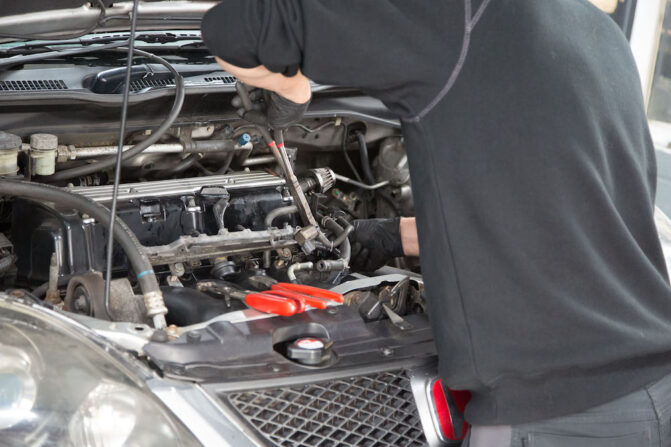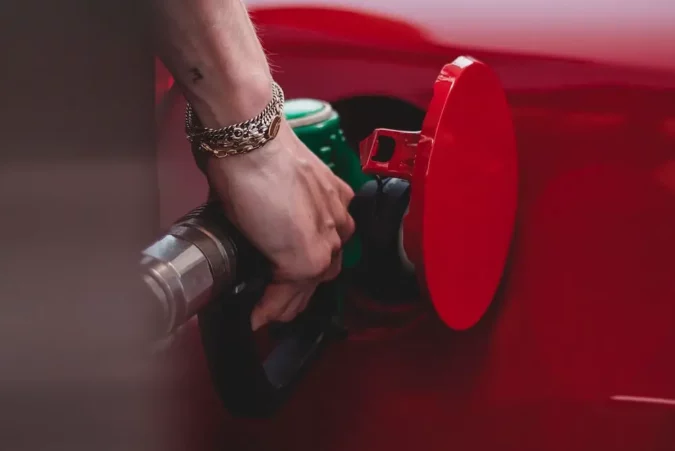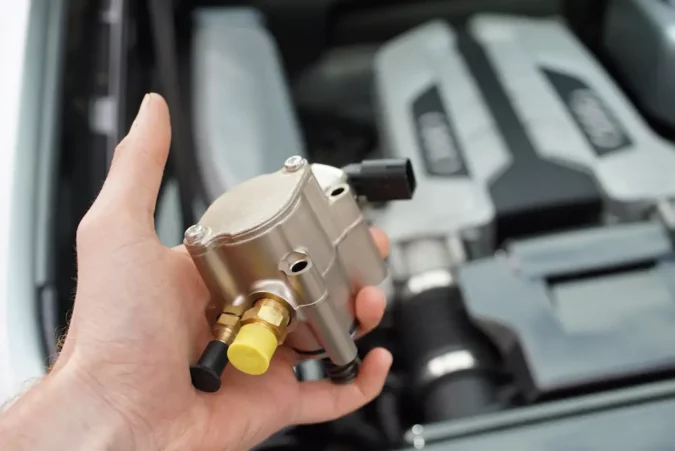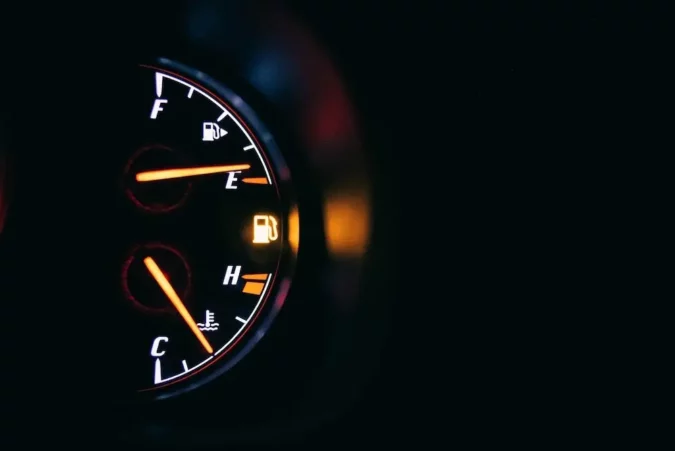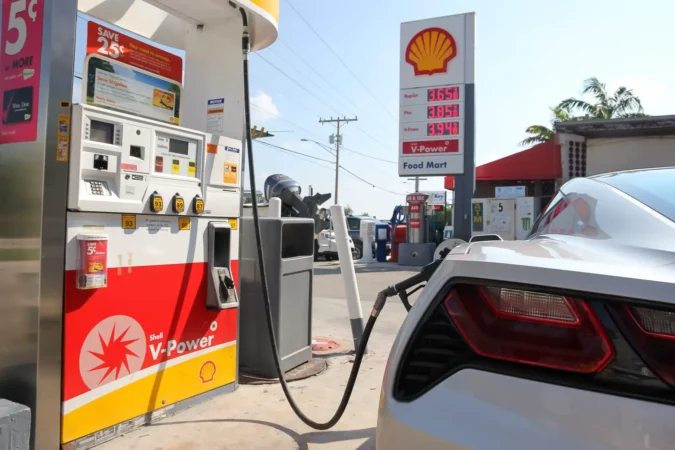Do you intend to repair or replace your car’s fuel pressure sensor? Do you need to know where to look for the sensor? Well, we’ve since researched and have the solution for you. At least one is present in all current car models. The gasoline rail is where you’ll often find this sensor.
A line runs from the gasoline pump to the fuel rail. In the following parts, we’ll go into greater detail about the fuel pressure sensor. The sections below will show you how to change your car’s fuel rail pressure sensor.
- Overview
- How can it be Checked?
- Where is it Located?
- Location of Rail Pressure Sensor
- Purpose of Fuel Injector Sensor
- What are the Symptoms?
- Causes of Failure
- Cost of Replacement
- What is Code P0193?
- How to Replace it?
Fuel Pressure Sensor
Modern automobile models check the gasoline at various stages and states due to how crucial fuel is to internal combustion engines. Inside your car, many fuel pressure sensors transmit various data to the ECU (engine control module) so that the latter can respond appropriately.
Fuel Tank Pressure Sensor
The fuel tank houses the first fuel pressure sensor. The fuel tank pressure sensor is housed within or on the gasoline tank. As a component of a car’s EVAP system, this particular sensor keeps track of the gasoline pressure inside the fuel tank.
The fuel system is kept leak-free by the evaporative emissions system, or EVAP. Additionally, it guarantees that any fuel vapors cannot escape. Hydrocarbons are present in the fuel’s vapors. Even while the engine is not running, a leaking fuel system can pollute the atmosphere every minute.
The EVAP system captures the fuel vapors. The ECU will illuminate the Check Engine Light to inform you that there is an issue if the EVAP system detects a leak or if any of its sensors malfunction. Speaking of the EVAP system, be mindful of OBD error codes, such as the ones below, if your car’s EVAP has gone awry:
- P0440
- P0446 (this P0446 code is typical among Toyota vehicles)
- P0449
- P0456 (this P0456 code is common among Dodge cars)
- P0457
- P0496
Fuel Rail Pressure Sensor
Common rail direct injection or a CRDi system is used in most automobiles. Older fuel distribution systems depend on the fuel pump to regulate the time, quantity, and pressure of the gasoline that enters the engine.
Systems using common rail direct injection keep the fuel inside the rail. The fuel injectors are connected to the rail via individual pipes. Fuel injectors manage timing, and the fuel pump controls fuel pressure. That’s unless you’re experiencing the symptoms of a bad fuel pump, and if you need to consider a fuel pump replacement cost.
The fuel rail pressure sensor monitors the fuel pressure inside the common rail. The fuel pressure control valve and the fuel quantity control valve’s duty cycle are calculated using the sensor by the ECU. Observing the fuel pressure inside also keeps an eye on how much fuel is there in the rail.
The ECU or powertrain control module is then informed of the precise amount of fuel that must be delivered to the fuel rail through a signal. The fuel system can adjust to the engine’s needs based on the speed and RPM it is now operating at due to the fuel rail pressure sensor.
Piezoelectric Effect With Fuel Sensor
Using the characteristics of a piezoresistive effect, the sensitive part of the fuel rail pressure sensor is located inside the sensor. When pressure is applied to an electrical component, it raises its electrical resistance, which is known as the piezoresistive effect.
As a result, a fuel rail pressure sensor’s electricity output to the ECU increases as fuel pressure decreases. When this occurs, the fuel pressure from the fuel pump will be raised by the ECU.
The pressure of the fuel also increases as the sensor’s resistance rises. The ECU adjusts the pressure to the engine’s requirements. The ECU will lower the pressure generated by the fuel pump if the pressure is too high.
Fuel Pressure Sensor
Some car models feature an additional sensor between the fuel tank and the fuel pump. Its responsibility is to monitor the pressure flowing from the gasoline tank. This is done to ensure that the fuel pump will have enough fuel even when the demand for fuel rises as RPM increases.
EVAP Pressure Sensor
It’s not very difficult to use a fuel tank pressure sensor. It actually operates on a straightforward 3-wire circuit. The sensor has three wires: a ground wire, a wire that returns electricity to the powertrain control module (PCM), and a reference voltage wire that connects to the computer in your car.
Therefore, if your fuel tank pressure sensor isn’t working properly, you must examine three wires to determine whether the issue is with the sensor itself or something else. The sensor is, regrettably, situated inside or on top of the fuel tank next to the hanger assembly that supports the fuel pump inside the fuel tank.
The average automobile owner will find it difficult to get there. This is why you normally have to visit a mechanic to have the sensor examined because most drivers can’t do anything more complicated than basic auto maintenance on their own.
Fuel Tank Pressure Sensor Location
The fuel tank pressure sensor, which is a component of the fuel pump system, is installed either within or on top of the tank. It measures fuel system pressure to look for evaporative leaks like a malfunctioning or loose gas cap. It is a component of the evaporative emissions system or EVAP.
Fuel Rail Pressure Sensor Location
The fuel rail pressure sensor is situated close to the center of the fuel rail. A gadget that measures a fluid’s pressure is called a pressure sensor. It transmits a signal to the engine control unit and gauges the fuel pressure in the fuel injectors.
The ECU uses this data to regulate how much fuel is pumped into the engine. ECU will increase the fuel injected if the pressure is too low. The ECU will reduce the amount of gasoline injected if the pressure is too high.
Fuel Injector Pressure Sensor
A popular engine management component on diesel engines is the injector control pressure sensor. As its name suggests, it is an electrical sensor that tracks the fuel pressure going to the injectors.
The computer can adjust for optimum performance and efficiency by receiving a signal from the injector control pressure sensor, which detects the pressure of the fuel feeding the injectors. The signal may be affected when this sensor has a problem, which could affect the vehicle’s performance.
Fuel Pressure Sensor Symptoms
There are several other warning signs and symptoms that you may watch out for to indicate a gasoline tank pressure sensor issue. Elsewhere, do check out our guide on the symptoms of a bad fuel pressure regulator for context.
1. Check Engine Light
As we just mentioned, the instant there is a problem with the gasoline tank pressure sensor, your check engine light will turn on. If you have an OBD2 scanner, the code P0452 will probably appear. You might instead encounter other OBD error codes, such as P0087, among others.
You should absolutely have this checked out since, while it might just be a problem with the seal on your gas cap, it could also indicate that you have a fuel system leak.
2. Stalling
If you notice that your automobile stalls regularly, a malfunctioning fuel tank pressure sensor may also be the cause. Your engine may stop burning fuel properly if the fuel tank pressure sensor stops giving accurate signals because it controls the fuel-to-air ratio required for the combustion reaction in your engine.
3. Hard Starts
When you have a malfunctioning fuel tank pressure sensor, you might also notice that it’s difficult to start your car because you might be experiencing stalls. You might not be getting the proper amount of fuel given to your engine to burn if it’s delivering the wrong data to the computer controlling your engine.
You can have difficulties starting your automobile if you have a lean fuel mixture or if the engine is running lean, which means there is much more air in the fuel.
4. Poor Fuel Efficiency
The sensor is once again feeding the engine’s computer the wrong signals, resulting in poor fuel efficiency. You risk burning too much fuel and experiencing poor performance if your computer lacks the necessary data regarding how much fuel you are now using and how much fuel is required to maintain speed.
You may also experience problems with acceleration along with lesser miles per gallon.
Causes Of A Bad Fuel Tank Pressure Sensor
It goes without saying that a fuel tank pressure sensor could malfunction due to mechanical issues for no reason at all. Any car component could experience that at some point in the future. However, other more frequent causes of gasoline tank pressure sensor failure could lead to some of the signs and symptoms.
1. Extreme Circumstances
Like most car equipment, the fuel tank pressure sensor is built to function in specific circumstances. Anytime you drive your car outside of these guidelines, you risk damaging various components, including the gasoline tank pressure sensor.
In this instance, the sensor could be set off if you are driving a car in extremely hot or cold weather. It may simply be the case that the climate where you live is exceptionally harsh, either being excessively hot or very cold.
Even extremely dry or extremely wet conditions may cause the sensor to degrade over time. In addition, driving your automobile in harsh conditions, such as off-roading or on uneven terrain, might generate excessive vibration in the car and harm the sensor.
2. Overfilling The Gas Tank
It’s conceivable that if you overfill your gas tank, fuel could spill into the charcoal canister. Since it shouldn’t touch your fuel directly, once it enters the overflow pipes, it may get to the fuel tank pressure sensor and harm it.
3. Accidental Damage
Although your gasoline tank pressure sensor is inside or close to the fuel tank, it is still vulnerable to damage from collisions. If this happens, it may be difficult to detect the problem if you were involved in a minor collision and were unaware that your car had been damaged inside.
The sensor or its connections may become dislodged due to collision damage, sending inaccurate data to your car’s computer.
Fuel Tank Pressure Sensor Replacement
Depending on the make and model of your car, replacing a fuel rail pressure sensor might cost quite a bit of money. An average replacement fuel rail pressure sensor will cost between $200 and $340. You will spend between $60 and $100 on parts alone and between $140 and $240 on labor to replace the sensor.
Naturally, you’ll spend more when you hire a dealership to work on your car than you would a freelance technician. In most circumstances, you shouldn’t try to replace yourself unless you have a lot of knowledge of auto repairs.
P0193 Fuel Rail Pressure Sensor High Input
P0193, also known as “Fuel Rail Pressure Sensor “A” Circuit High,” is a diagnostic trouble code (DTC). It is recorded when the PCM determines that the fuel rail pressure sensor signal exceeds the calibrated limit for a predetermined period of time.
When the P0193 code occurs, you will often only notice the check engine light on your dashboard. Additionally, it is possible for your car to be running too rich, affecting the vehicle’s performance and resulting in black smoke from the exhaust pipe.
Fuel Rail Pressure Sensor Replacement
You can replace it by following the instructions below once you have established that it is the source of your issue.
- Place your car in a level, well-ventilated spot. It’s crucial to be in a well-ventilated place because some gasoline will be ejecting from your car.
- Put the parking brake on.
- Put your car’s transmission in park (P). Allow your vehicle to cool. Your engine’s interior is still warm, so the fuel inside the fuel rail will be under a lot of pressure. Allow your vehicle to cool overnight if need be.
- Fuel will spray everywhere if the gasoline rail pressure sensor is removed while the fuel is still hot.
1. Locating The Fuel Rail Pressure Sensor
- Take off the engine cover.
- Trace the gasoline lines that lead from the engine. Each one will eventually lead to the fuel rail.
- The fuel rail is connected to the fuel rail pressure sensor.
- It could be at the beginning, the middle, or the entrance of the fuel rail.
- It will be secured in place by bolts, generally two.
2. Fuel Rail Pressure Sensor Removal
- Utilizing a plastic tool, cut the fuel line leading to the sensor.
- Cut the wire harness off.
- The fasteners holding the sensor in place must be removed.
- Remember that only hand tools should be used to take out and replace the bolts. Sparks can be produced while using power tools.
- Sparks should not be allowed to occur close to open gasoline lines.
- Put rags under the sensor and rail.
- Pull the old sensor out while covering the gasoline sensor with a rag.
- Place the replacement sensor in place.
- The fasteners holding it in place should be replaced.
- The electrical harness must be reconnected.
- The fuel hose reconnected.
Fuel Rail Pressure Sensor Test With A Multimeter
Remove your car’s fuel rail pressure sensor. Get your multimeter and start your car’s engine. Connect the sensor’s probes to its wires. See what the meter says. If the results differ and do not fall within the range your vehicle intended to run within, the sensor has a problem.
1. Locate The Fuel Rail Pressure Sensor
The fuel rail pressure sensor for your car must first be located. Both gasoline and diesel engines contain these sensors. It is positioned in the middle of the fuel rail. The module that is attached to the ECU is also visible.
2. Eliminate The Sensor
You must carefully remove the sensor from your car once you’ve located it. Consult the directions in your car’s auto repair manual if unsure how to begin. You’ll be able to comprehend the procedure better as a result.
3. Visually Check The Sensor
Examine the sensor for signs of deterioration, corrosion, dirt, or grease. Verify that all connections are secure. If there is any corrosion, clean the fuel tank pressure sensor using a wire brush.
4. Attach The Sensor And Multimeter
Disconnect the pressure and then start the vehicle. Set the voltage parameter on the multimeter when grabbing it. Next, join the red lead to the positive wire of the pressure sensor’s lead and the black one to the sensor’s negative wire.
5. Analyze The Results Of The Voltage
Next, look for results on the multimeter’s display. The device’s voltage results should then be compared to the necessary levels by consulting the specs manually. If the measurement deviates from the specifications, the sensor is broken. Abnormal results imply that the sensor cannot deliver the proper pressure to the entire system.
The sensor might need to be fixed or replaced in this case. Open the automobile’s hood and check the wiring by detaching and reconnecting each wire if the voltage result is as expected. Use a test box while diagnosing wiring.
Fuel Tank Pressure Sensor Code P0452
The portion of an automobile’s emissions control system, known as EVAP, regulates fuel tank pressure and is the subject of a P0452 fault code. Typically, this is referred to as the evaporative pressure sensor or the gasoline tank pressure sensor.
The following are the most typical reasons for a P0452:
- Bad fuel cap
- Incorrect sensor
- Faulty tank sensor wiring
- Incorrect purge control solenoid
- Clogged or broken canister for charcoal
- A vacuum leak
Similarly, as with any other EVAP code, your mechanic will check the fuel cap, tighten it again, clear the code, reset the engine computer, and then test the car to determine if the code reappears. However, the sensor might be to blame if the code continues to appear.
Your mechanic can check the fuel tank pressure readings using an expert OBD-II scanner to see if the engine computer is picking up a vacuum from the sensor. If not, before replacing the pressure sensor, the wiring from the sensor should be checked to ensure there isn’t a communication fault.
Fuel Tank Pressure Sensor Wiring Diagram
It has three wires: a grey cable with a 5-volt supply, a black wire for the sensor ground, and a dark green wire for the signal. Since it’s a push-in sensor, it will pull out and push in as soon as your eyes or touch detect it. Some can be released by bending out a little tab on one end.
Be careful where you place it; it must be exposed to the same circumstances as the tank and be free of obstructions. If not, when the system applies vacuum, it can trigger an EVAP code or, worse, it might force the tank to collapse in on itself.
Frequently Asked Questions
Where Is the Fuel Rail Pressure Sensor Located
The fuel rail pressure sensor is situated close to the intake manifold on the fuel rail. Finding it is made simple by following the fuel rail and looking for the component before the injectors.
Where Is The Fuel Tank Pressure Sensor Located
The fuel tank pressure sensor, which is a component of the fuel pump system, is installed either within or on top of the tank.
What is EVAP
Fuel vapors from the fuel tank and fuel system are never allowed to escape into the atmosphere, thanks to the Evaporative Emission Control System (EVAP). Since the 1970s, gasoline-powered automobiles must have EVAP systems.
How To Test A Gas Cap For Leaks
These vapors can potentially cause an emissions system problem, resulting in the check engine light turning on. The injectors could also become contaminated by dirt that leaks into the gas tank. The strongest indicator of a faulty gas cap is the gasoline odor in your car.
What Does EVAP Mean On A Code Reader
All automobiles and trucks must have EVAP or evaporative emissions control systems. The EVAP system functions as an onboard recycling system by directing these vapors into the engine to be burned. A complex system of hoses, valves, filters, and other components makes up the EVAP system.
Where Is The EVAP Pressure Sensor Located
The duty cycle evaporative (EVAP) canister purge solenoid is situated close to the brake master cylinder in the engine compartment.
How Does EVAP System Work
The EVAP system prevents fuel system fumes from entering the atmosphere directly. Vent lines transport fuel tank vapors to the vapor canister, where they are contained and kept until the engine is started.
What Does The Fuel Pressure Sensor Do
This sensor’s job is to monitor the fuel pressure inside the fuel rail. The sensor gathers this data, which is then sent to the engine control unit. The timing of the fuel injections and the amount of fuel being injected will then be adjusted after the computer has processed the data. This enables the engine to run at its best under the current driving circumstances.
How To Replace Fuel Tank Pressure Sensor
The battery is unplugged, and the fuel pressure is bled. It is removed from the faulty fuel rail sensor. The new fuel rail sensor is mounted. Reconnect the battery. The fix is confirmed, and the car is tested on the road to ensure it runs properly.
Why Does My Car Say Check Fuel Cap
The computer has identified a leak in the system, often caused by a loose gas cap if your fuel cap light is on. If this light appears while you are driving, stop immediately and secure the cap again. Within a day or two, the light should stop flashing if you keep driving normally while it is on.
How To Test A Fuel Tank Pressure Sensor
Remove your car’s fuel rail pressure sensor. Get your multimeter and start your car’s engine. Connect the sensor’s probes to its wires. Take a look at the meter’s readings.
What Causes A Fuel Tank Pressure Sensor To Go Bad
A malfunctioning fuel rail pressure sensor could be caused by damage to the fuel tank. The consequences of a leaking tank, foreign objects in the tank, or even too much air may be transmitted further along the line.
What Are The Symptoms Of A Bad Fuel Pressure Sensor
Weak acceleration and engine misfire are typical symptoms of a malfunctioning FTP sensor, just like with fuel pressure regulators. While driving, you’ll experience an abrupt reduction in engine output. The car can stutter, hesitate, or even bog when riding in the early morning or on a sunny afternoon.
How To Fix Fuel Pressure
Check the surrounding gasoline line to see if your gas tank is functioning normally. Verify that it is attached and isn’t misaligned, broken, or leaking fuel. Your battery can be an issue if your gasoline tank and supply lines are sound. Ensure that every connection between your battery and the rest of the machine system is in place, and use a power probe or multimeter to check the battery’s life. Locate your gasoline pump and check it, paying special attention to the filter screen and relay element. Replace either or both of these components if they are broken, then try using your system as usual. Finally, if you found no problems with the aforementioned components, the pressure regulator is probably the source of the issue. You can check your regulator with a fuel pressure gauge.
Final Verdict
One of the components that most drivers aren’t even aware of working inside their automobile at any one time is the gasoline tank pressure sensor.
However, the sensor data is essential to ensuring that your automobile is operating at its highest level of efficiency constantly in a way that will increase your gas mileage (which you can confirm by learning how to calculate your gas mileage), save you money, and keep your car functioning as well as it can.
Unfortunately, the symptoms of a faulty gasoline tank pressure sensor can sometimes be confused for various other problems with your car’s engine or fuel system. That implies that it can require some effort to identify the source of the issue and determine what is wrong with your car.
Since a check engine light is the most typical symptom, drivers usually disregard this issue because it can be extremely simple for some people to do so. Numerous factors can cause the light to turn on, and occasionally, your automobile will continue to function normally despite it.

